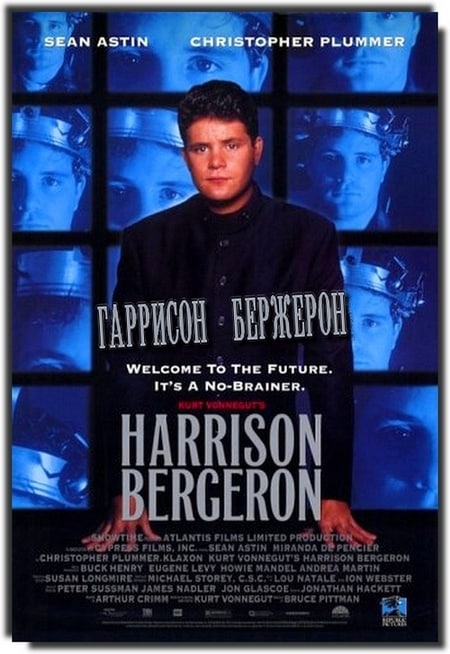In the 1960’s, the fight for civil rights, gender equality, and equity reached a peak. “Harrison Bergeron”, by Kurt Vonnegut, Jr. presents an effective warning for the reader, teaching readers that it is dangerous to allow those in power to define ideals like equality. Set in 2081, Vonnegut, Jr.’s Orwellian vision of the United States shows the possible consequences when an ideal like equality is distorted because it is taken too far.
The totalitarian leader, Diana Moon Glampers, convinces Americans to give up their individuality in exchange for what she claims will be a better society. However, the problem is that Glampers’ totalitarian government misrepresents equality. Specifically, rather than ensuring that each person has equal opportunities, under Glampers’ regime, equality is reduced to mean sameness.
The disturbing conclusion of the story shows that being different is punishable by death because the difference is threatening to the totalitarian state. Vonnegut, Jr. uses symbols and characterization to express the repercussions when ideals like equality are abused by those in power. This abuse becomes even more destructive when the public complies without question to state control. Therefore, the author stresses the significance of questioning all state propaganda.
Vonnegut, Jr. uses symbols throughout the story to show the consequences of a public that allows a state to define their ideals. It is clear from the beginning of the story that the definition of equality comes from the states’ Amendments to the Constitution. Vonnegut, Jr. demonstrates that citizens do not have the ability to define equality for themselves which leads to the elimination of their unique qualities.
Citizens are “required by law to wear [the handicap] at all times… [and it] send[s] out some sharp noises” (Vonnegut 1) to disrupt their train of thoughts. This coercion is significant because the ear machine represents Americans’ inability to think critically for themselves. Since characters like George, do not question why the government enforce their thinking to be disrupted, the government can successfully persuade citizens to willingly give up their talents. Not only do the Americans allow the state to control what they think, they also allow for the state to control their communication.
Specifically shown by the news announcers, Vonnegut uses their “serious speech impediment” (Vonnegut 3) to symbolize their lack of voice. The Americans’ physical disability signifies their inability to inquire Diana’s actions. Moreover, news reporters are viewed as unbiased and trusting sources for information about current problems and solutions. However, as Vonnegut narrates, the news reporters in 2081 cannot do their job. The news reporters cannot speak and think which results in the obeying of Diana’s commands by repeating and spreading her message of conformity.
Diana’s selfish needs are only met because the community unquestionably supports the government’s messages. Through symbolism, Vonnegut shows a community’s consequences when they allow people in power to abuse them.
Through the use of characterization, Vonnegut Jr explains the consequences of Americans’ unconditional support for the government. For instance, the author describes Hazel as an avid admirer of Glampers even though she took away her son, Harrison. In fact, Hazel wants to be the handicapper General as she believes that “[she will] make a good Handicapper General” (Vonnegut 2) and be able to invent noises to stop people like George from thinking. However, Hazel knows that the handicap hurts George as she sees him flinch every time the radio goes on.
Despite this, Hazel is still seen admiring Glampers and her idea of a better and equal community. The acceptance of this double think is the foundation of effective government propaganda. The dangers of effective propaganda are that the government can get the public to give up their life, identity, and family to serve the government. As seen in the story, Diana’s propaganda allows her to rob the citizens of their talents and still have their avid support. Furthermore, the author reveals Georges’ and Hazels’ neutral attitude and opinion about their son being taken away for being talented. Instead of fighting back for Harrison, their 14-year son back, Hazel and George are trained to “forget sad things” (Vonnegut 6) for the sake of building a community that Diana believes is equal.
Such double think is only viable when there is an unbalance of power between the people and the government because the people do not realize the importance of their role and voice within a community. The consequence of allowing the government to determine the ideals such as the right to kill someone because they are talented is that the community loses basic rights.
As seen in the story, Harrison loses his life for playing music and dancing. Through characterization, Vonnegut, Jr. demonstrates the dire consequences of when a country falls under the hands of a totalitarian leader.
Vonnegut, Jr. successfully shows the importance for citizens to question the government’s motives by using symbols and characterization to reveal the consequences when a community blindly accepts all state messages. The most significant symbols the author uses are the speech impediment of the news reporters and the handicap radio.
Also, George’s and Hazel’s support for the government message of conformity and killing all who do not conform supports why thinking is so critical under a totalitarian state. Such consequences are seen in the short story as the totalitarian leader, Glamper abuses the idea of equality for destructive and selfish reasons. Even though the ending shows a hopeless future, Vonnegut, Jr. leaves the audience thinking about what is really happening behind the government’s walls.
Works Cited
Vonnegut, Kurt. Harrison Bergeron. New York: Mercury, 1961. Print.


You are full of yourself. If you envy American way of life you should change not America?